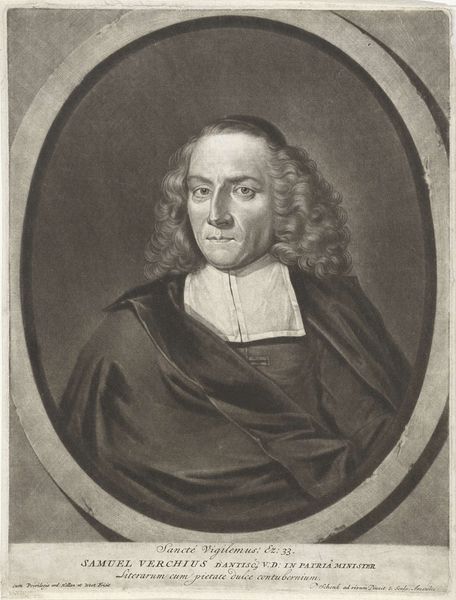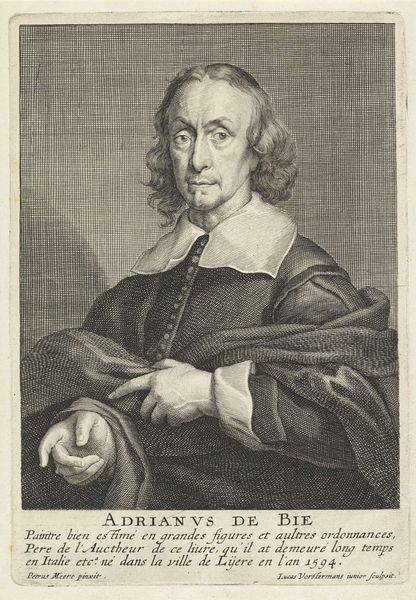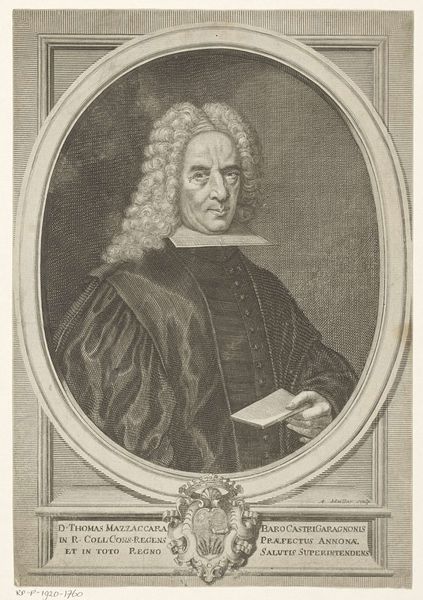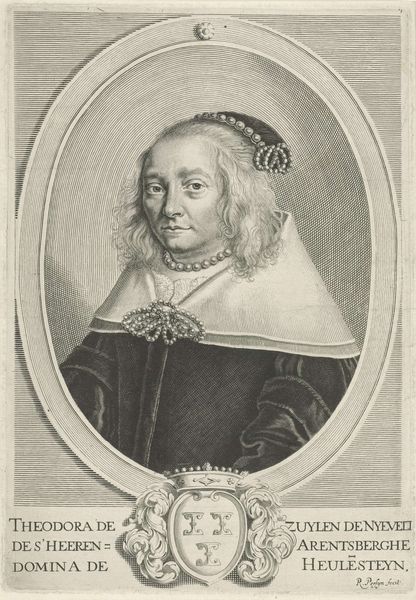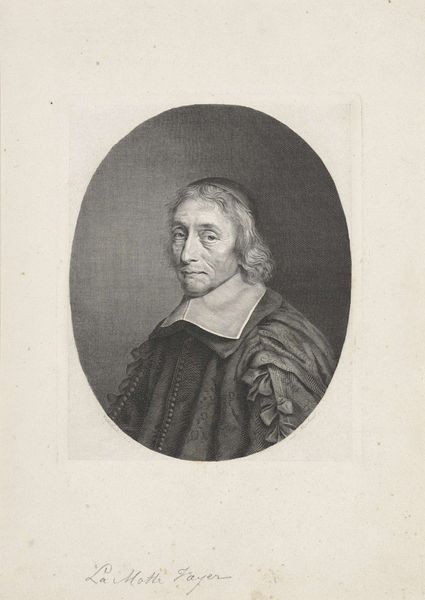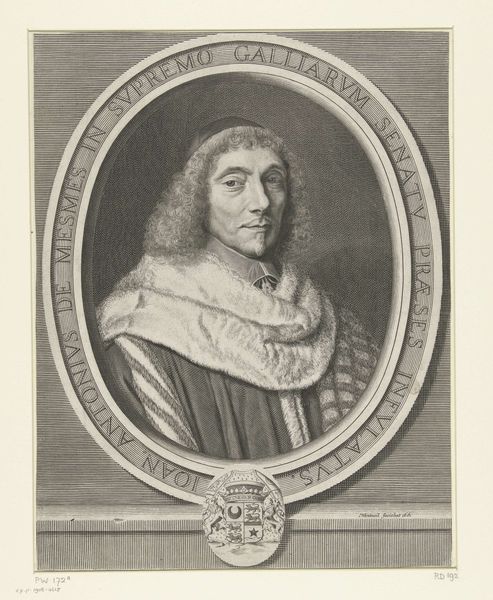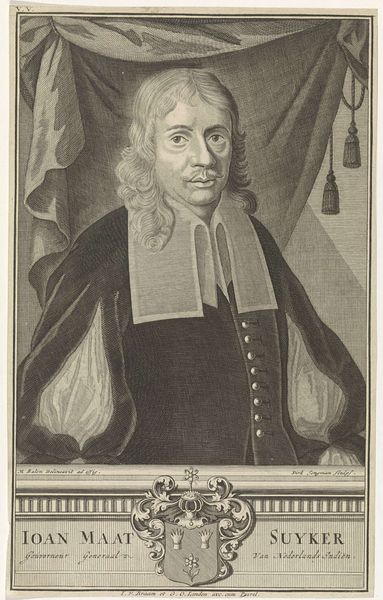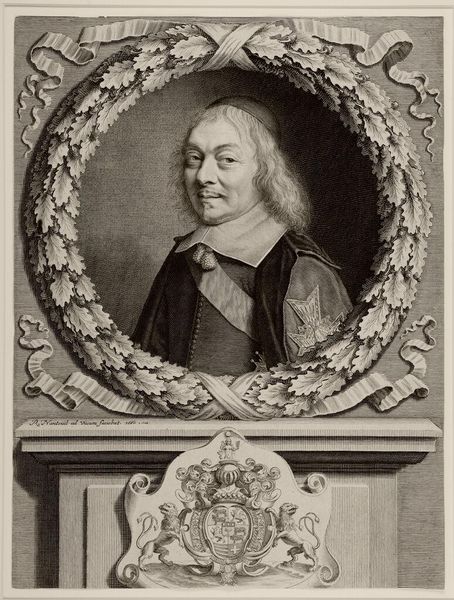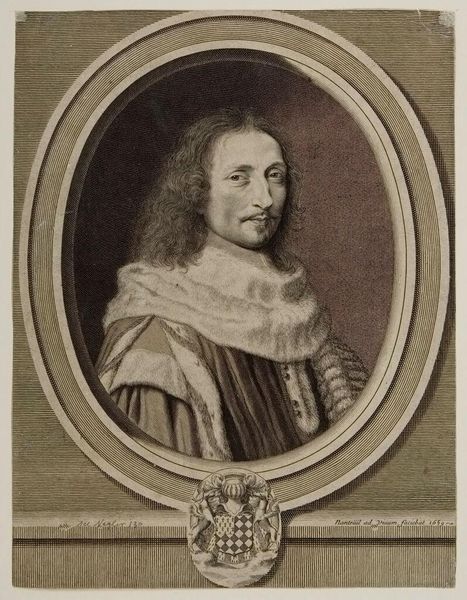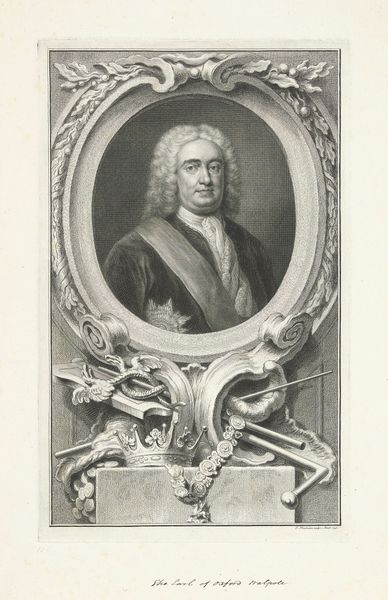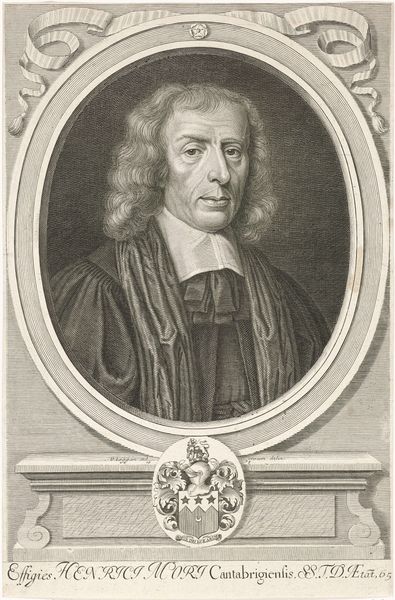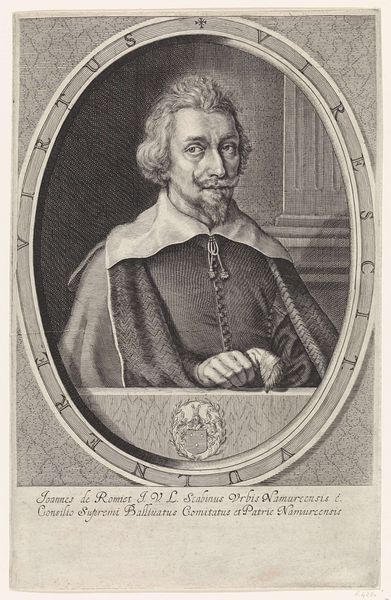
print, engraving
#
portrait
#
baroque
#
dutch-golden-age
# print
#
figuration
#
line
#
engraving
Dimensions: height 315 mm, width 246 mm
Copyright: Rijks Museum: Open Domain
Editor: This is Theodor Matham’s “Portret van Johannes de Jonghe,” a print from somewhere between 1654 and 1676, in the Rijksmuseum. I find the sharp lines and contrasts in this engraving very striking. It creates a serious mood. What do you make of this portrait? Curator: Indeed, the precision of the engraving is remarkable. But consider the historical context. The Dutch Golden Age, with its booming economy and shifting social structures, fostered a new kind of portraiture. Who was being portrayed, and why? Editor: You mean, this isn't just about aesthetics? Curator: Precisely! These portraits often served as powerful markers of identity and status in a society undergoing significant transformation. What does Johannes de Jonghe's attire and setting—the column, the draped fabric—suggest about his position in society? Editor: It gives a sense of wealth and status, for sure. He looks very serious and dignified, and that backdrop adds a sort of weightiness. Curator: Exactly. But let’s think critically. Whose stories are being told, and whose are being excluded? Were women or people of color given similar opportunities to have their images immortalized and displayed? The creation and consumption of art are never neutral acts. Who has the power to represent themselves and others is a question we should ask ourselves with every work we come across. Editor: That really makes me rethink my initial reaction. There's so much more than just the aesthetic qualities. Curator: That is correct. It's crucial to remember the social dynamics that shaped these images and consider them within broader intersectional narratives. We can see not just who is visible, but also who is not. Editor: I'll definitely look at art differently now. Thank you for expanding my understanding!
Comments
No comments
Be the first to comment and join the conversation on the ultimate creative platform.
